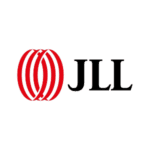 It is such a veritable feast out there for a PR professional; who is today spoiled for choice between the old and new media.
It is such a veritable feast out there for a PR professional; who is today spoiled for choice between the old and new media.
Those from the old school still view the Social media with a lot of caution and concern. With the tizzy aspect of ‘Virability’ inherent in social media, they are not completely wrong.
Then there are fans of PR 2.0 who make the poor mistake of ignoring the more conventional media outlets. But the wisest are those who hold both kinds in esteem and continue to reap benefits out of the two.
For any true blue PR pro, media is the strongest ally and one of the most powerful tools in the PR toolkit. The usefulness and power that the media mix holds over a PR person’s overall role is undeniable. So much so that in many companies and PR agencies, the efficacy of a PR person’s performance is measured by media presence garnered for the company represented.
So what should your media mix look like? There are distinct qualities that set the old media apart from the new. Both have aspects that are useful in the overall planning of a successful PR exercise.
Here is a quick snapshot of the Top Five pluses and minuses of both kinds of media, to make you better informed and equipped:
Traditional media
Top Five Pluses
- It is the best form of credible Third Party Endorsement.
- To appear in a top-notch publication immediately ups or reinforces the profile of your Brand in the minds of the significant public. Think Condé Nast, WSJ, New York Times, The Guardian, Forbes, Fortune and you get the picture.
- To be written about by the renowned reviewers/writers of these publications is a major achievement in media presence. Imagine getting a first-class rating by the seasoned and star columnists and see how proud and pleased the owners, management and the guests are.
- Mentions in traditional media have a sense of permanence to it. The news report can be filed and archived and can easily be dug into when it needs to be referenced again.
- It is easier to control what is being written about you (either through your Press Release or on account of your established relationship with the media representative) and form opinions in the traditional media as compared to the information circus that exists in the New Media.
Top Five Minuses
- It faces the danger of getting dated and being lost in the annals of time. A news story that appeared in print at so and so date gets time stamped; a Tweet or update on a Company Website / Facebook page can be put out at one time and easily resurrected in a new avatar at another.
- The negative review hits the Brand hard, going by the same logic of appearing in a top-notch publication and written by the high profile reviewer.
- In today’s times of excessive information being delivered to your desktop, laptop or palmtop every second, it may face the risk of getting lost in the deluge.
- With new information coming up every second, your article in traditional media can become old news sooner than you think.
- Because of the timelines it adheres to, there exists an inherent gap between the sending of your press release or a journalist reviewing your product and the actual appearance of the story. That could be on account of a backlog of stories in hand with the media or something of more importance coming up at short notice. Many a time your news report gets printed as a post-event publicity and that is half the battle lost.
New / Social media
Top Five Pluses
- You can control what is being said about you through your blog, pages, updates, and tweets.
- You have a direct access to your guests and can reach them with ease in relation to your news, offers, and promotions.
- Instead of just one media platform, you have the ability to turn your news into a viral phenomenon and see it appear in several media planks simultaneously.
- You have the opportunity to send out more information about yourself. There is no restriction on how much you want to or can share.
- The power publications and the publicists that pack a punch are also on the New Media. Which means they can not only continue to write about you in the online editions but can also do so in their personal spaces of blogs, twitter page etc. which also enjoy additionally huge following.
Top Five Minuses
- You have less control over what people say about your product through their blogs, pages, updates and tweets.
- In the New Media, just about anybody can turn a writer or opinion maker and send their comment into the Social Media whirlpool. This can and does include your guests who can make direct comments on their experience. The realm of news does not just belong to the journalists anymore.
- You must ensure that your news is meaningful and useful to the guest for it to be lapped up and for it to be something that your guests look forward to. Otherwise, it is very easy for you to become an irritant and face the risk of being unfriended or unfollowed.
- It is difficult for you to control the vehicles where you wish to appear, keeping in mind your Brand personality and profile. Through the channels of New Media, your brand can find a presence even in those media outlets in which you do not wish to appear.
- It is hugely difficult to grab the attention and enjoy readership penetration as the window of appearance and presence has been sizeably shortened in the flux of all the information that floats in the world of Social Media World; be it Blogosphere, Twitterdom, Facebook zone, LinkedIn Groups, YouTube or innumerable others.
And a final comparison – to have your piece or property featured in a publication of repute is a prominent feather in your cap. But then the Social Media opens up a whole new world with its wide reach and focused penetration. It also offers the advantages of “viralbility” with sharing and re-sharing and being followed by the key groups of the audience that we wish to address.
Going by this measure, Social Media is several notches up as compared to the traditional tactical vehicle of Direct Marketing. With the latter companies often lamented whether the expensive mailer was being read by the CEO or his secretary. There was always the question mark about whether or not that pricey, glossy flyer was managing to hold the interest of the end user for the right amount of time, ensuring grasping of the offer that you wished to sell.
I am from that group of people who believes that we will always get to hold and feel the crispiness of newspaper with our morning cuppa; that we will still leaf through glossies and not just at salons or clinics. That in spite of the upsurge in the demand for Kindles we will still get to hold and smell the mustiness of paperbacks and hardbound, at least in our lifetime. I also belong to the set that uses the socially relevant New Media optimally, intelligently and with such mastery that it reaps rich dividends for the company we represent.
In my PR scheme of things, both the media have their place, position and prevalence and both need to be used effectively in order to enable me to stay on top of my game and you on yours.


















